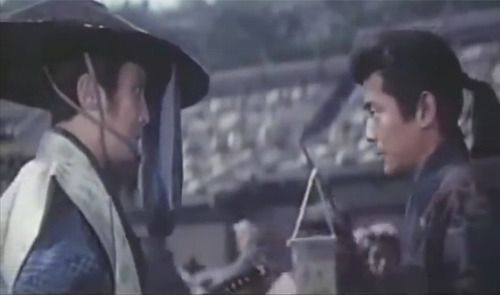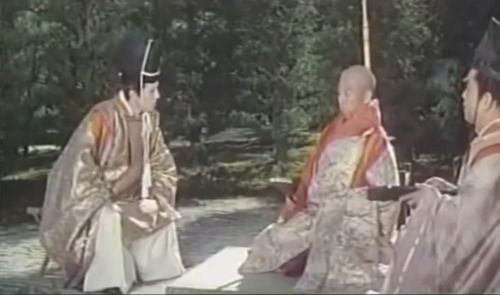One of the first series to pop-up styled after this tendency and featuring Nobunaga as the main character is "Nobunagun".
This series was first released as a manga in 2011 by the author Masato Hisa and reduced into a 13 episodes-long anime series on January 2014.

In this anime, Shio Ogura is your spacey military otaku girl, who lives her passion with a shy and reserved character, sure that people may make fun of her because of her strange tastes.
Things change for ever when Shio is forced to join the mysterious DOGOO organization, that fights evil aliens for the sake of humankind, because of her peculiar genes, coming staight from the Incident of Honnoji.
So, Nobunaga-sama comes to give strenght and tactical smartness to the girl by temporary possessing her body and showing his strategical genius.
Besides Nobunaga, the other main characters host the genes of Jack the Ripper, Gandhi, Newton, Geronimo, Gaudi, Galileo, the photo-reporter Capa, the criminalist Vidocq and the surgeon Hunter. In my opinion DOGOO had to do a better job with its DNA selection in case of alien invasion! I mean-- Robert Capa?!
The character of Shio was cute at the beginning, expecially because of the fun military passion, then the random sexual innuendos she's the victim of and her really stupid crush on Jack the Ripper left this watcher with a very huge WHY?! on her lips.
I was hoping for some interesting development and well, it just ends with Jack reciprocating his feelings for Nobunaga-chan. --Sorry if I find the mental image a bit disturbing XD
During the same exact period we were presented another anime of doubtful taste, "Nobunaga The Fool".
This was another intriguing project, born as a live stage exhibition in 2013 and later developed into an anime to air on January 2014.

And of course it was a waste of time.
If the superficiality of the characters' treatment in "Nobunagun" was almost its redeeming quality, here the scriptwriters of "The Fool" did their best to characterize the "Western Invasors" as evil, useless, treacherous and overall perverted-- Of course the only reason for the Westerners to be attracted by the Eastern Planet was to steal all its energy and resources, turning the planet into crap.
I still can't believe what happened to guys like Cesare Borgia, Nicolò Machiavelli and Charlemagne in this freaking anime.
The only Western characters who were treated with some mercy where only two: Leonardo Da Vinci, because he followed his wish to visit Jap-AEHM, the Eastern Planet to look for enlightment, and Julius Caesar, because he had the "good taste" to fall in love with a proper Japanese chick, the meek and charming Ichi-hime, Nobunaga's little sister.
The portrayal of Nobunaga had its interesting bits and revelations during the episodes, like how his acting as a fool hid the inner pain and troubles that he wasn't supposed to show, but on the contrary, to use as fuel for his ambition "whatever may happen", I mean, stuff that made one hope for some badass resolution, but no, the conclusion of the anime was exactly as pointless as I was afraid, and in the end Pandor-AEHM, Jeanne's boobs were almost the only redeeming feature of the series.
I'll close this sad list with the only "jewel" of this peculiar genre, the fun "Drifters" by Kouta Hirano, author of the famous "Hellsing".
This manga started its serialization in 2009, and on 2013, bundled with the OVA of the last DVD of "Hellsing Ultimate", was presented a short animation video dedicated to this series, more an omake to the fans of Hirano rather than an actual trailer for an OVA in the making:

The forces on the battlefield are separated into two factions: "The Drifters", those whose deaths were mysterious and left unproven, part of which Nobunaga is, and "The Ends", those who met a terrible death by the hands of others, making them grew spiteful of humankind.
Nobunaga is portrayed as a man in his fifties, being "transported" in the new world right after the Incident of Honnoji: he has a temper and it's a really fun and enjoyable portrait.
I found it interesting how Nobunaga's behaviour is centered around his feelings as a "father", that are the reasons why he takes under his protective wig the yound and wild Shimazu Toyohisa, the protagonist of the series.
The manga of Hirano is quite outrageous and disturbing in many parts, but it's that kind of narration and style that made him popular and entertaining as an author.
This genre start from another curiosity of people: what would happen if important historical characters from various places and historical periods would get to meet? Well, the answer is quite obvious: a war.

















